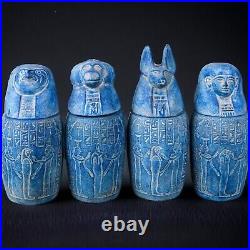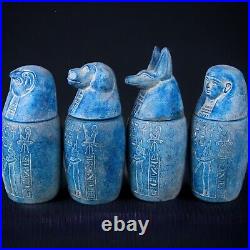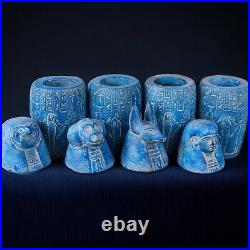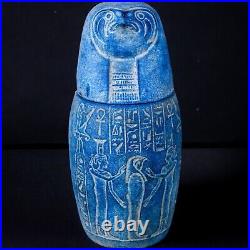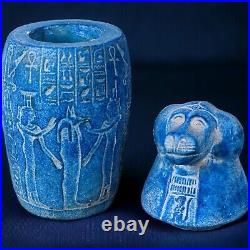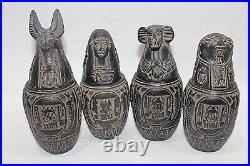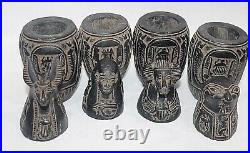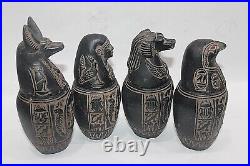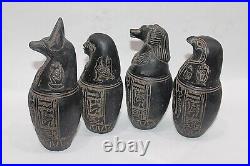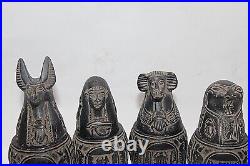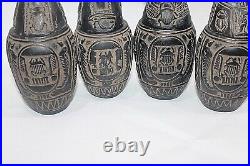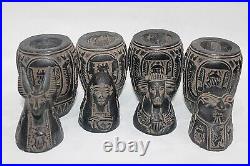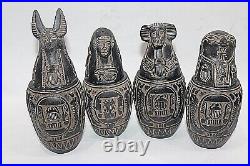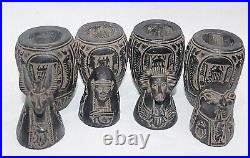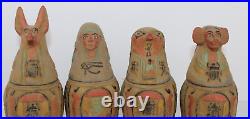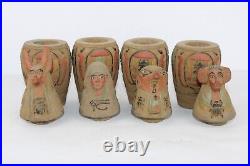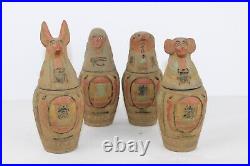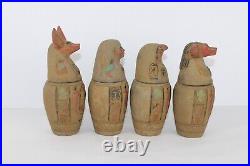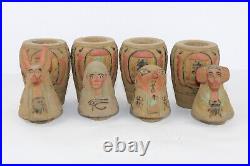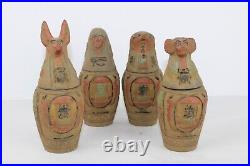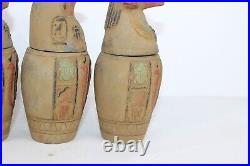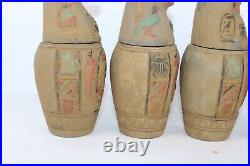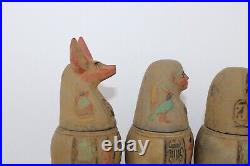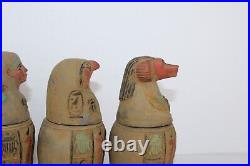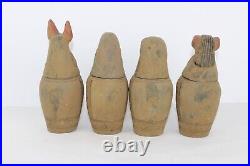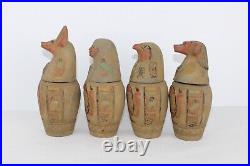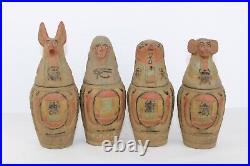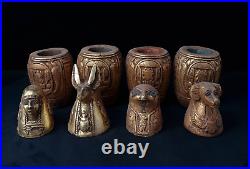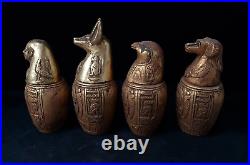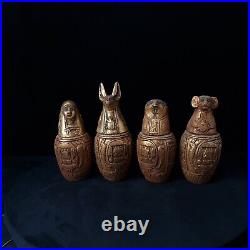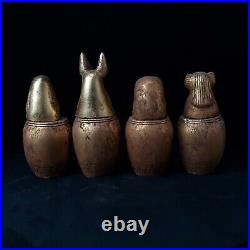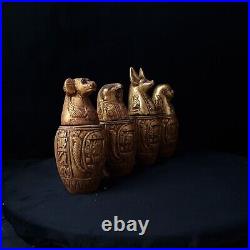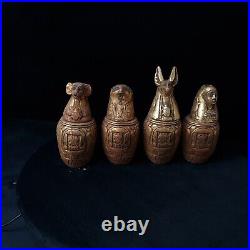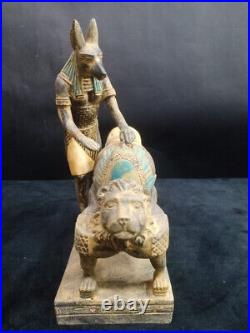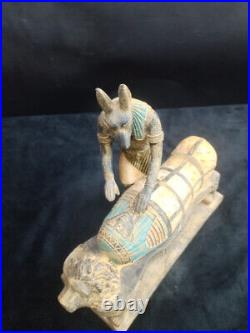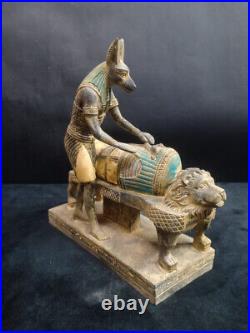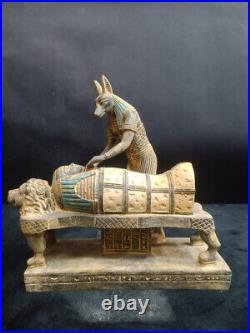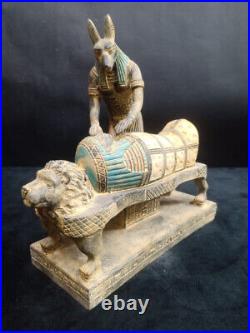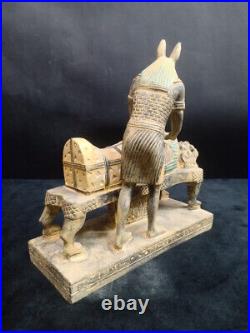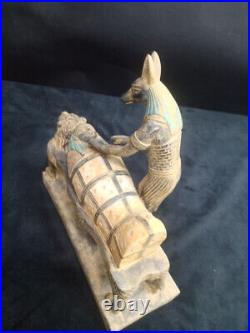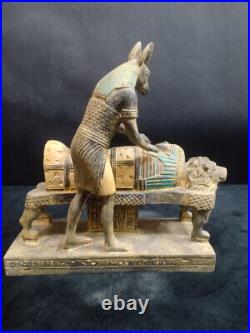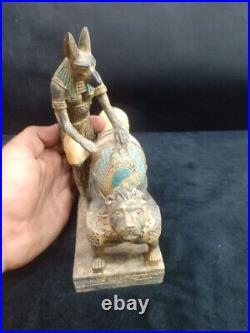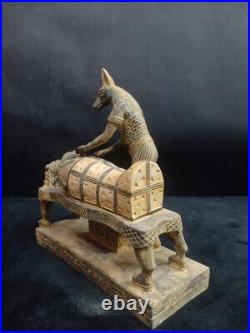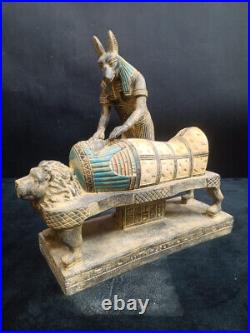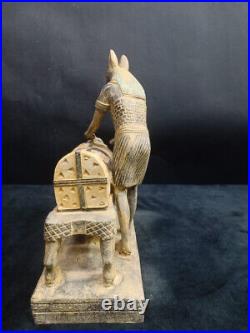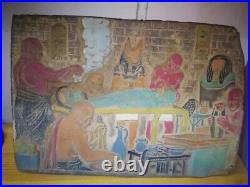
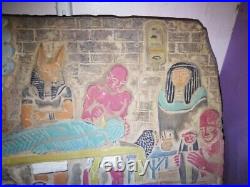
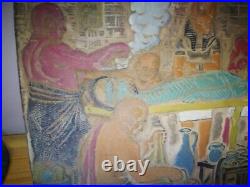
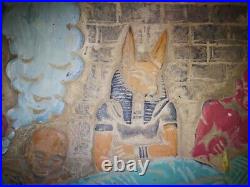
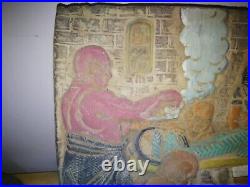
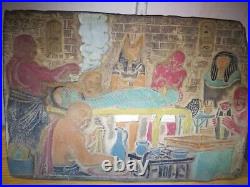
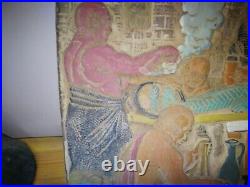
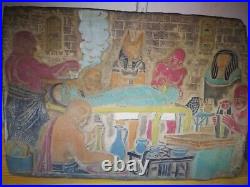
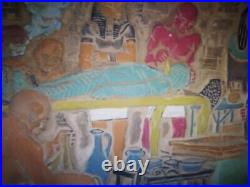

Size : Size: :Height:38 cm. Bottom Width:25 cm. Rare Stela Egyptian Relief Ancient God Anubis The mummification process BC. The painting of the god Anubis during the mummification process depicts an important task in ancient Egyptian culture, where the god Anubis, the god of longing and death, is embodied. The following is a general description of the painting depicting Anubis during the mummification process. Subject: The painting depicts Anubis carrying out the death penalty. Mummification is an attempt aimed at realizing the dead body and giving it a chance to continue in the afterlife. It is believed that the god Anubis is responsible for performing this operation and protecting deceased souls. Location and details: The painting could be located in an ancient Egyptian tomb or on the walls of a temple. The clear clarity of the painting reflects the experience of Al-Anatouni, which is what is meant by depicting life. The painting of the god Anubis may occur in human form with the head of a dog, wearing a traditional costume that refers to his role in the mummification process. Symbolism and meaning: The god Anubis is symbolized as the companion and guide of deceased souls on their journey to the afterlife. Mummification is fundamentally existential, and because the soul is after death, Anubis is an important part of it in this way. Supreme Court of the ancient Egyptians’ religious belief in the afterlife and the importance of preserving the dead body. Colors and technique: The colorful painting may be in multiple bright colors, and Pharaonic colored colors such as pastels and organic colors may be used. We can also use cross-hatching and shading to highlight the details of 3D letters. The painting of the god Anubis during the mummification process is part of a collection of ancient Egyptian art documenting the leader and traditions relating to the afterlife. This painting is considered one of the pieces of evidence that contributes to understanding. I apologize, but unfortunately I do not have updated information about the latest Arab films. This is based on films released after my knowledge end date of September 2021. It is recommended to consult reliable Arab cinema news sources for online information about Arabic films. That the Item Will Delivered to You As Shown in Pictures Therefore we recommend that you see the picture well and then take your decision and take your responsibility. I check myself each product and sell only the best quality products. In any case, if you are not satisfied with the product, first, please contact me and I will do everything to your?? satisfaction.



